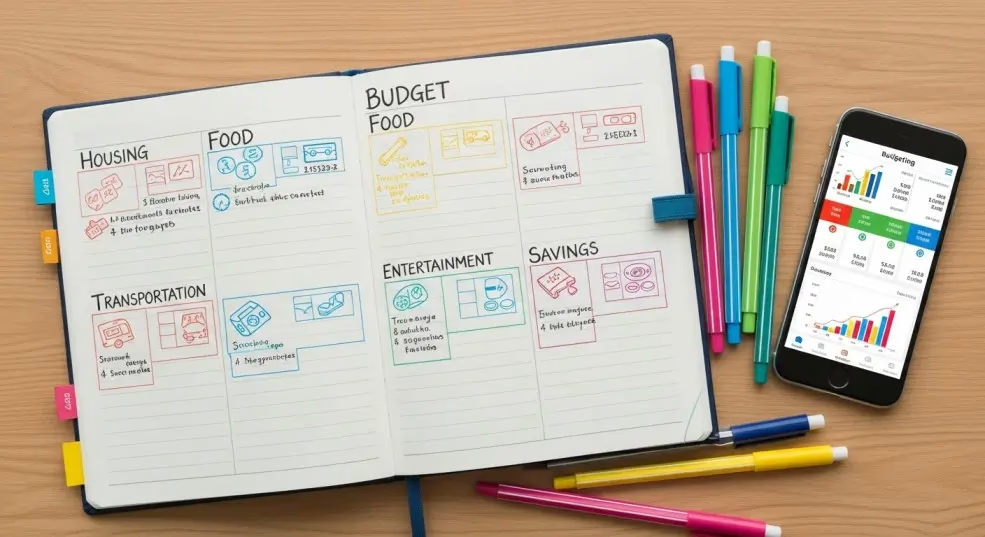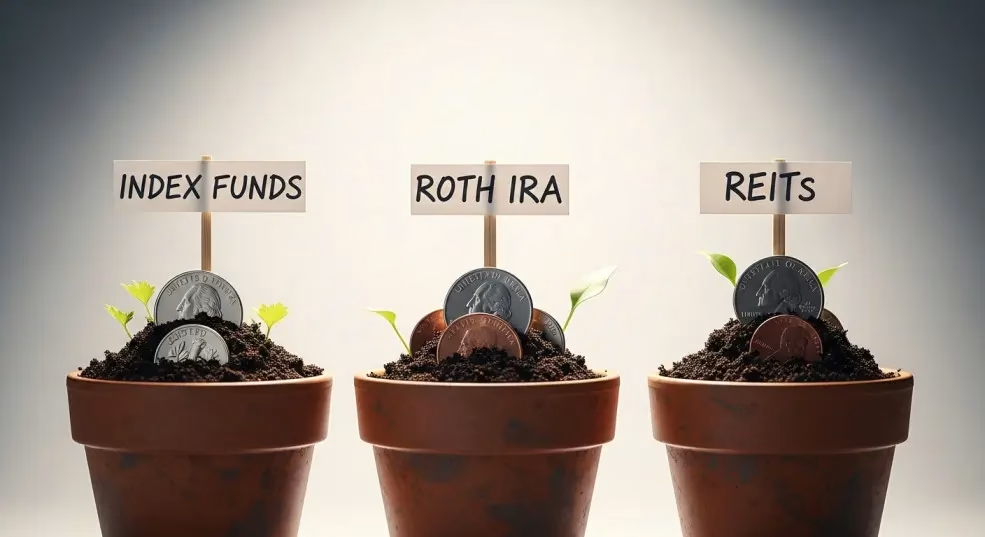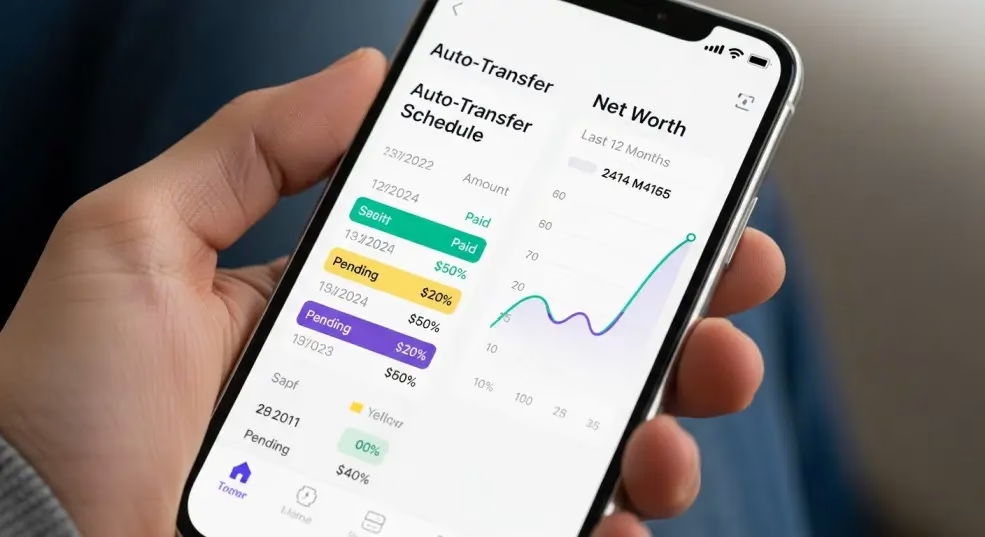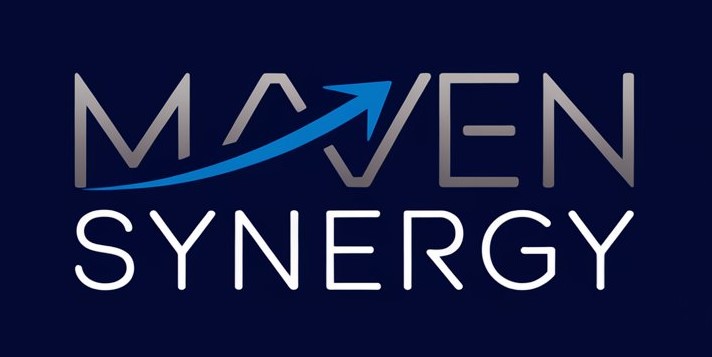7 Practical Steps to Fast-Track Financial Independence
Imagine waking up to a new day, and instead of that familiar knot in your stomach about bills or that dreaded commute, you actually smile. Why? Because you’ve cracked the code to financial independence, and money stress is officially a thing of your past.
I know what you’re thinking – “Yeah right, that’s just for trust fund babies or tech billionaires.” But here’s the thing: I’ve watched regular people – teachers, nurses, even part-time baristas – build wealth that gives them REAL choices. The secret isn’t some complicated Wall Street magic trick. It’s following proven, practical steps that anyone can master.
The FI/RE movement (Financial Independence, Retire Early) isn’t just trendy internet chatter anymore. It’s a legitimate roadmap that’s helping millions of people escape the paycheck-to-paycheck trap. And you know what? You’re closer than you think.
Whether you’re a fresh college grad drowning in student loans or a mid-career professional wondering if it’s too late to start, this guide will show you exactly how to fast-track your financial independence. We’re talking real strategies, not get-rich-quick fantasies. Ready to take control of your financial future? Let’s dive in.
1. Cultivate a Financial Independence Mindset: The Foundation of FI/RE

Before we talk numbers and investment strategies, let me share something crucial: Your mindset is everything. I’ve seen people with six-figure salaries stay broke, while others earning $40K build impressive wealth. The difference? How they think about money.
What Does Financial Independence Truly Mean? (It’s More Than Just Retirement)
Here’s where most people get it wrong – they think financial independence means sitting on a beach sipping margaritas at 35. That’s retirement thinking, not financial freedom mindset thinking.
Financial independence actually means this: Having enough passive income and assets to cover your living expenses without depending on a traditional job. You CAN still work if you want to. You just don’t HAVE to.
Think about it this way:
- Traditional retirement: Work until 65, then hope your 401k lasts
- Financial independence: Build enough assets so work becomes optional at any age
The beauty? You get to define what “enough” means for YOUR life. Maybe it’s $2 million in index funds. Maybe it’s $500K plus a paid-off house and rental property. There’s no universal magic number.
How to Calculate Your “FI Number” – Your Personal Financial Target
Now we get to the fun part – crunching YOUR numbers. Most financial experts use the 4% rule as a starting point. Here’s how it works:
Your FI Number = Annual Expenses ÷ 0.04
Let me break this down with real examples:
| Annual Expenses | FI Number Needed | Monthly Passive Income |
| $40,000 | $1,000,000 | $3,333 |
| $60,000 | $1,500,000 | $5,000 |
| $80,000 | $2,000,000 | $6,667 |
| $100,000 | $2,500,000 | $8,333 |
Pro Tip: Start by tracking every expense for one month. I mean EVERYTHING – that $4 coffee, Netflix subscriptions, groceries. You can’t hit a target you can’t see.
But here’s what I’ve learned after helping dozens of people define their FI number: Don’t just calculate based on today’s expenses. Think about your ideal lifestyle. Want to travel more? Live in a different city? Factor that in.
Shifting from a Spender to an Investor Mindset
This mindset shift changed my entire financial trajectory, and it can change yours too. Instead of asking “Can I afford this?” start asking “What could this money earn me instead?”
Let me give you a real example. That $200 monthly car payment? If you invested that money in index funds earning 8% annually, you’d have about $175,000 after 25 years. Suddenly, that car payment looks different, doesn’t it?
Spender Mindset vs. Investor Mindset:
- Spender thinks: “I earned this money, I deserve to spend it”
- Investor thinks: “Every dollar I don’t spend is a dollar that can work for me”
- Spender thinks: “I’ll invest when I make more money”
- Investor thinks: “I’ll make more money by investing what I have now”
Pro Tip: Before any purchase over $100, wait 24 hours. Ask yourself: “Will this get me closer to or further from my FI number?” You’ll be shocked how often the answer changes your decision.
Now that you’ve got the foundation in place, let’s talk about supercharging your financial engine with the one thing that can dramatically accelerate your FI timeline – your income.
2. Maximize Your Income: Fuel for Your FI Engine

Here’s a truth that might sting a little: You can’t budget your way to wealth if your income is too low. Sure, cutting expenses matters, but there’s only so much you can cut. Your income potential? That’s virtually unlimited.
I learned this the hard way. I spent two years obsessing over coupon clipping and skipping lattes, only to realize I could earn more in one freelance weekend than I’d save in six months of extreme frugality.
Investing in Yourself: Developing High-Income Skills (Tech, Sales, Digital Marketing)
The fastest way to boost your earning power isn’t hoping for a raise – it’s developing skills that pay. Period. The market rewards certain skills with premium wages, and you can learn most of them without going back to school.
Top High-Income Skills for 2025:
| Skill Category | Average Salary Range | Learning Time | Best Resources |
| Software Development | $70,000 – $180,000 | 6-12 months | FreeCodeCamp, Coursera |
| Digital Marketing | $50,000 – $120,000 | 3-6 months | Google Skillshop, HubSpot |
| Sales (B2B) | $60,000 – $200,000+ | 1-3 months | LinkedIn Learning, Sandler |
| Data Analysis | $65,000 – $140,000 | 4-8 months | Kaggle, DataCamp |
| Copywriting | $45,000 – $100,000 | 2-4 months | Copy.ai, AWAI |
Pro Tip: Don’t try to learn everything at once. Pick ONE skill that excites you and matches your personality. Are you analytical? Try data analysis. Love persuading people? Sales might be your goldmine.
Launching Profitable Side Hustles (Freelancing, E-commerce, Gig Economy)
Side hustles aren’t just trendy – they’re wealth-building machines. The average American with a side hustle earns an extra $1,122 monthly. That’s over $13,000 yearly that could go straight into your FI fund.
High-ROI Side Hustles to Consider:
- Freelance writing: $25-$100+ per hour
- Virtual assistance: $15-$50 per hour
- Online tutoring: $20-$60 per hour
- E-commerce (Amazon FBA): $500-$5,000+ monthly profit
- Consulting in your expertise: $50-$300+ per hour
The beauty of side hustles for financial freedom is they can start small and scale big. I know a teacher who started selling printable planners on Etsy for extra grocery money. Three years later, her “little side business” generates $8,000 monthly.
Strategic Career Moves: Negotiating Raises and Promotions
Your day job is still your biggest wealth-building tool, so let’s optimize it. Most people leave thousands on the table because they never ask for more money. Here’s how to change that:
The 90-Day Raise Strategy:
- Days 1-30: Document everything you do that adds value
- Days 31-60: Research market rates for your position
- Days 61-90: Schedule the conversation with your boss
Pro Tip: When negotiating, never lead with personal reasons (“I need money for my mortgage”). Lead with value (“I’ve increased our team’s efficiency by 23% and saved the company $15,000 this quarter”).
Career Advancement Moves That Pay:
- Learn skills your boss values most
- Volunteer for high-visibility projects
- Build relationships across departments
- Document your wins obsessively
Remember, every $1,000 salary increase compounds over your entire career. A $5,000 raise today could mean $200,000+ more earnings over 20 years.
With a solid mindset and growing income, you’re ready for the next crucial step – making sure you keep more of what you earn through strategic spending.
3. Master Strategic Spending and Budgeting

Here’s where I see most people mess up their financial independence journey: They think budgeting means living like a monk and never having fun. That’s complete nonsense. Smart budgeting is about intentional spending – making sure every dollar serves your bigger goals.
I used to be the queen of impulse purchases. Target runs that turned into $200 shopping sprees. Subscriptions I forgot about. Fancy dinners that didn’t even taste that good. Then I discovered something game-changing: strategic spending actually gives you MORE freedom, not less.
The Power of a Values-Based Budget (Zero-Based vs. 50/30/20)
Forget those cookie-cutter budgets that tell you to spend exactly 30% on housing. Your life isn’t a spreadsheet template, and your budget shouldn’t be either.
The 50/30/20 Rule Breakdown:
- 50% – Needs (rent, groceries, utilities)
- 30% – Wants (entertainment, dining out, hobbies)
- 20% – Savings and debt repayment
This works great if you’re just starting out. But if you’re serious about fast-tracking financial independence, I recommend zero-based budgeting instead.
Zero-Based Budgeting in Action: Every dollar gets assigned a job BEFORE you spend it. Here’s how:
| Budget Category | Traditional % | FI-Focused % | Monthly Amount (on $60K) |
| Housing | 30% | 25% | $1,250 |
| Transportation | 15% | 10% | $500 |
| Food | 12% | 10% | $500 |
| Savings/Investing | 20% | 35% | $1,750 |
| Fun Money | 23% | 20% | $1,000 |
Notice the difference? You’re prioritizing your future self while still having fun money.
Pro Tip: Start with the 50/30/20 rule for three months to get your bearings, then gradually shift toward a more aggressive savings rate. Jumping from 20% to 35% savings overnight is a recipe for budget burnout.
Frugal Living Hacks That Don’t Feel Like Deprivation
I’m going to share some frugal living tips that actually improved my quality of life. These aren’t about clipping coupons (though that’s fine too). They’re about being smart with your money.
My Top Money-Saving Strategies:
- The 24-hour rule: Wait a day before non-essential purchases over $50
- The subscription audit: Review all recurring charges quarterly (I found $247 in forgotten subscriptions!)
- Generic brand testing: Try store brands for everything except your absolute favorites
- The envelope method: Use cash for discretionary spending categories
- Meal prep Sundays: Saves me $300+ monthly on food
The “Fun Fund” Strategy: Instead of cutting out all entertainment, I created a separate “Fun Fund” – $200 monthly for whatever brings me joy. Knowing I had guilt-free money for fun stuff made me way less likely to overspend elsewhere.
Cutting the “Big Three” Expenses: Housing, Transportation, and Food
Want to know the fastest way to accelerate your FI timeline? Attack your three biggest expenses. These typically eat up 60-70% of your income, so small improvements here create massive results.
Housing Optimization:
- Refinance your mortgage if rates have dropped
- Get a roommate (even temporarily) – adds $500-$1,500 monthly income
- House hack: Buy a duplex, live in one side, rent the other
- Relocate strategically: Move somewhere with lower cost of living but similar wages
Transportation Wins:
- Drive your car longer: Every year you don’t have a car payment saves $400-$600 monthly
- Consider going car-free: Uber + public transit can be cheaper in many cities
- Buy reliable used cars: Let someone else take the depreciation hit
Food Savings That Actually Work:
- Plan meals around sales: Build your weekly menu from grocery store flyers
- Batch cook: Make large portions, freeze extras
- Strategic dining out: Choose experiences over expensive restaurants
However, even the best budgeting strategy won’t work if you’re hemorrhaging money to debt payments. That’s why eliminating debt is your next mission-critical step.
4. Eliminate Debt: Removing the Anchor from Your Journey

Let me be brutally honest: Debt is the enemy of financial independence. Every dollar you pay in interest is a dollar that can’t compound and grow for your future. I learned this lesson the expensive way – carrying $23,000 in credit card debt while trying to build wealth. It’s like trying to fill a bucket with a massive hole in the bottom.
The good news? Once you commit to your debt-free journey, progress happens faster than you think. Here’s your battle plan.
Good Debt vs. Bad Debt: Knowing the Difference
Not all debt is created equal. Understanding this distinction will save you thousands in interest and years of stress.
Good Debt Characteristics:
- Helps you build wealth over time
- Often tax-deductible
- Usually has lower interest rates
- Typically appreciates in value
Bad Debt Characteristics:
- Decreases in value immediately
- High interest rates (usually 15%+)
- Used for consumption, not investment
- Creates financial stress
| Debt Type | Category | Why? | Typical Interest Rate |
| Mortgage | Good | Real estate appreciates | 3-7% |
| Student loans | Good* | Education increases earning potential | 3-6% |
| Business loans | Good | Can generate income | 4-10% |
| Credit cards | Bad | Purchases lose value immediately | 18-29% |
| Auto loans | Bad | Cars depreciate rapidly | 4-12% |
| Personal loans | Bad | Usually for consumption | 6-20% |
*Student loans can be good debt if they lead to higher earnings, but avoid excessive borrowing.
Pro Tip: If you have both good and bad debt, attack the bad debt aggressively while maintaining minimum payments on good debt. Your mortgage at 4% can wait while you crush that credit card at 22%.
The Two Proven Methods: Debt Snowball vs. Debt Avalanche (With Examples)
I’ve helped people succeed with both methods. The key is choosing the one that matches your personality.
Debt Snowball Method (Dave Ramsey’s Favorite): Pay minimums on everything, throw extra money at the SMALLEST balance first.
Debt Avalanche Method (Mathematically Optimal): Pay minimums on everything, attack the HIGHEST interest rate first.
Real Example – Sarah’s Debt Situation:
| Debt | Balance | Interest Rate | Minimum Payment |
| Credit Card A | $2,000 | 24% | $50 |
| Credit Card B | $5,000 | 18% | $125 |
| Car Loan | $12,000 | 6% | $250 |
| Student Loan | $25,000 | 4% | $300 |
With $500 extra monthly:
Snowball Approach: Attack Credit Card A first (smallest balance)
- Psychological win: Debt eliminated in 4 months
- Total interest paid: $8,547 over 3.2 years
Avalanche Approach: Attack Credit Card A first (highest rate – same in this case!)
- Mathematical win: Less interest paid overall
- Total interest paid: $7,892 over 3.1 years
Pro Tip: If you’re someone who needs motivation and quick wins, go snowball. If you’re disciplined and want to save the most money, go avalanche. Both methods work – consistency matters more than perfection.
Strategies to Tackle High-Interest Credit Card Debt
Credit card debt is wealth cancer. It grows fast and kills your financial dreams. Here’s how to destroy it:
The Balance Transfer Strategy: Move high-interest debt to 0% APR cards (if you qualify). This gives you 12-21 months of interest-free payments.
The Negotiation Approach: Call your credit card companies. Seriously. Ask for:
- Lower interest rates
- Payment plans
- Hardship programs
- Debt settlement (last resort)
The Side Hustle Blitz: Remember those income strategies from section 2? Use them specifically for debt elimination. Every extra dollar goes to debt until it’s gone.
The Cash-Only Rule: Cut up the credit cards (or freeze them in ice). If you can’t afford it with cash, you can’t afford it. Period.
Pro Tip: Celebrate small wins along the way. When you pay off that first debt, do a little happy dance. Take a screenshot of that zero balance. These psychological rewards keep you motivated for the long haul.
Now that you’ve optimized your spending and eliminated the debt anchor, you’re ready for the wealth-building acceleration phase – putting your money to work through smart investing.
5. Invest Aggressively and Wisely: Make Your Money Work for You

This is where the magic happens. I remember staring at my first $1,000 in savings, paralyzed by investing fear. “What if I lose it all?” Fast forward five years, and that hesitation cost me thousands in potential growth. Don’t make my mistake.
Here’s the truth: The stock market has never lost money over any 20-year period in history. Ever. Your biggest risk isn’t market volatility – it’s inflation eating away your cash while you sit on the sidelines.
Demystifying Tax-Advantaged Accounts: Maximizing Your 401(k) and IRA (Roth vs. Traditional)
Tax-advantaged accounts are your secret weapons for fast-tracking financial independence. They’re like getting a head start in a race while everyone else is still tying their shoes.
The 401(k) Game Plan: First things first – get that employer match. If your company matches 50% of your contributions up to 6% of salary, and you’re not contributing at least 6%, you’re literally leaving free money on the table.
401(k) vs. IRA Comparison:
| Account Type | 2024 Contribution Limit | Employer Match? | Early Withdrawal Rules |
| 401(k) Traditional | $23,000 ($30,500 if 50+) | Yes | 10% penalty before 59½ |
| 401(k) Roth | $23,000 ($30,500 if 50+) | Yes | Contributions anytime, gains penalized |
| Traditional IRA | $7,000 ($8,000 if 50+) | No | 10% penalty before 59½ |
| Roth IRA | $7,000 ($8,000 if 50+) | No | Contributions anytime, no penalties |
Roth vs. Traditional – The Million Dollar Question:
- Choose Roth if: You’re young, in a lower tax bracket now, or expect higher taxes in retirement
- Choose Traditional if: You’re in a high tax bracket now and expect lower taxes in retirement
Pro Tip: Can’t decide? Do both! I contribute enough to my traditional 401(k) to get the full employer match, then max out my Roth IRA. Best of both worlds.
The Simple Path to Wealth: Low-Cost Index Fund and ETF Investing
Forget trying to pick the next Amazon or Tesla. Index fund investing is how regular people build extraordinary wealth. Warren Buffett has bet $1 million that index funds will outperform actively managed funds over 10 years. Guess who’s winning?
My Simple Three-Fund Portfolio:
- 70% Total Stock Market Index (like VTSAX or VTI)
- 20% International Stock Index (like VTIAX or VXUS)
- 10% Bond Index (like VBTLX or BND)
This gives you ownership in thousands of companies worldwide with expense ratios under 0.1%. Compare that to actively managed funds charging 1-2% annually – that difference compounds to hundreds of thousands over decades.
Index Fund Performance Reality Check:
| Investment | 20-Year Average Return | $500/Month After 20 Years |
| S&P 500 Index | 10.5% | $379,684 |
| Actively Managed Funds | 8.5% | $311,438 |
| Savings Account | 1.5% | $130,580 |
The numbers don’t lie. Index fund investing isn’t sexy, but it works.
Pro Tip: Don’t try to time the market. I invest the same amount every month regardless of whether stocks are up or down. This “dollar-cost averaging” smooths out volatility and removes emotion from investing.
Building Passive Income Streams: Real Estate (REITs) and Dividend Stocks
Here’s where we start building passive income streams that can eventually replace your salary. This is the difference between working until 65 and achieving financial independence in your 40s.
Real Estate Investment Trusts (REITs): Think of REITs as owning rental properties without being a landlord. You get the income and appreciation potential without midnight toilet repair calls.
Top REIT Categories:
- Residential REITs: Apartment complexes, single-family rentals
- Commercial REITs: Office buildings, shopping centers
- Healthcare REITs: Hospitals, senior living facilities
- Industrial REITs: Warehouses, distribution centers
Popular REIT options: VNQ (Vanguard Real Estate ETF) or individual REITs like Realty Income (O) – they literally call themselves “The Monthly Dividend Company.”
Dividend Stock Strategy: I love dividend stocks because they pay you to own them. Every quarter, cash shows up in my account whether the stock price goes up or down.
Dividend Aristocrats to Consider:
- Johnson & Johnson: 60+ years of dividend increases
- Coca-Cola: 59+ years of dividend increases
- Procter & Gamble: 66+ years of dividend increases
Pro Tip: Reinvest those dividends automatically. Those small payments buying more shares create a snowball effect that accelerates wealth building dramatically.
With your investment strategy locked in, let’s make sure you’re not leaving money on the table through poor financial organization and tracking.
6. Optimize Your Finances with Automation and Tracking

I used to spend Sunday mornings paying bills, transferring money, and updating spreadsheets. It was about as fun as a root canal. Then I discovered financial automation, and it changed everything. Now my money moves itself, and I spend Sundays doing things I actually enjoy.
Financial automation isn’t just convenient – it’s crucial for fast-tracking financial independence. When good financial behaviors happen automatically, you can’t sabotage yourself with poor decisions or forget important deadlines.
How to Automate Your Savings and Investments (Set It and Forget It)
The best financial system is one you don’t have to think about. Here’s my complete automation setup:
The Automation Sequence:
- Paycheck hits checking account
- Fixed expenses auto-pay (rent, utilities, insurance)
- Savings transfers execute (emergency fund, FI investments)
- Investment contributions happen (401k, IRA, taxable accounts)
- What’s left becomes spending money
My Monthly Automation Schedule:
| Date | Action | Amount | Destination |
| 1st | Emergency fund transfer | $200 | High-yield savings |
| 1st | Investment transfer | $1,500 | Brokerage account |
| 5th | Roth IRA contribution | $583 | Vanguard |
| 15th | Extra mortgage payment | $300 | Principal reduction |
Tools That Make Automation Easy:
- Bank auto-transfers: Set up recurring transfers between accounts
- Investment platform automation: Most brokerages offer automatic investing
- Bill pay services: Never miss a payment or pay late fees again
- Apps like YNAB or Mint: Connect accounts and automate categorization
Pro Tip: Start your automation small and build up. I began with just $50 monthly automated investing. Once I forgot it existed, I bumped it to $100, then $200, then $500. Before I knew it, I was automatically investing over $1,000 monthly without feeling the pinch.
The Best Tools and Apps for Tracking Net Worth and Spending
You can’t manage what you don’t measure. Net worth tracking transformed my financial picture from fuzzy guesses to crystal-clear progress reports.
My Favorite Financial Tracking Tools:
For Net Worth Tracking:
- Personal Capital (free): Connects all accounts, beautiful dashboards
- Mint (free): Great for beginners, simple interface
- YNAB ($84/year): Best for budgeting, worth every penny
- Tiller ($79/year): Spreadsheet-based, highly customizable
For Investment Tracking:
- Morningstar (free): Research stocks and funds
- Yahoo Finance (free): Real-time quotes and portfolio tracking
- Your brokerage app: Vanguard, Fidelity, Schwab all have great mobile apps
Net Worth Tracking Made Simple:
| Assets | Current Value | 6 Months Ago | Growth |
| 401(k) | $45,000 | $38,000 | +18.4% |
| Roth IRA | $12,000 | $9,500 | +26.3% |
| Savings | $15,000 | $13,000 | +15.4% |
| Home Equity | $50,000 | $48,000 | +4.2% |
| Total Assets | $122,000 | $108,500 | +12.4% |
| Liabilities | Current Balance | 6 Months Ago | Progress |
| Mortgage | $185,000 | $188,000 | -$3,000 |
| Car Loan | $8,000 | $12,000 | -$4,000 |
| Total Liabilities | $193,000 | $200,000 | -$7,000 |
Net Worth: -$71,000 (was -$91,500) = $20,500 improvement!
Pro Tip: Update your net worth monthly, not daily. Daily fluctuations will drive you crazy. Monthly tracking shows real progress and keeps you motivated.
Conducting an Annual Financial Review
Every December, I sit down with a cup of coffee and review my entire financial year. This annual financial review has caught mistakes, revealed opportunities, and kept me on track toward my FI goals.
Your Annual Review Checklist:
Income Analysis:
- How much did you earn from all sources?
- Which income streams grew the most?
- Where can you increase earnings next year?
Expense Review:
- What were your top spending categories?
- Which expenses provided the most value?
- What can you cut or optimize?
Investment Performance:
- How did your portfolio perform vs. benchmarks?
- Are you properly diversified?
- Do you need to rebalance?
Goal Assessment:
- How close are you to your FI number?
- What milestones did you hit?
- What adjustments do you need to make?
Pro Tip: Schedule this review like any important appointment. Block out 2-3 hours in early January when you have fresh perspective and motivation for the new year.
With automation handling the day-to-day and tracking keeping you accountable, you’re ready for the advanced strategies that can shave years off your FI timeline.
7. Advanced Strategies to Accelerate Your FI Timeline

Here’s where we separate the good from the great. These advanced FI strategies can cut 5-10 years off your journey to financial independence. I wish someone had shared these with me when I started – they would’ve saved me so much time and money.
Understanding FI Milestones: Coast FI, Barista FI, and Full FI
Not all financial independence looks the same. Understanding these milestones helps you celebrate progress and make strategic decisions along the way.
The Three Levels of Financial Independence:
| FI Level | Definition | Target Amount | Work Required |
| Coast FI | Enough invested to reach Full FI by retirement age without adding more | Varies by age | Keep working, stop investing |
| Barista FI | Enough to cover basic expenses, work part-time for extras | 50-75% of FI number | Part-time or passion work |
| Full FI | Complete financial independence | 25x annual expenses | Work becomes optional |
Coast FI Example: If you’re 30 and have $100,000 invested, you’ve likely hit Coast FI. That money will compound to $1.6 million by age 65 without adding another dime.
Barista FI Sweet Spot: This is my personal favorite milestone. Once you hit Barista FI, you can take that passion job, start a business, or work part-time without financial stress. The pressure is OFF.
Pro Tip: Celebrate each milestone! I threw a small party when I hit Coast FI at 32. It felt incredible knowing my financial future was secure, even if I stopped investing completely.
The Power of Geoarbitrage: Leveraging Location for Financial Gain
Geoarbitrage is earning big-city salaries while living in low-cost areas. This strategy can accelerate your FI timeline dramatically. I know people who cut their FI timeline in half simply by moving strategically.
Domestic Geoarbitrage Examples:
Tech salary in Austin instead of San Francisco: Save $2,000+ monthly on housing
Remote work from Nashville instead of NYC: Same income, 40% lower costs
Consulting from rural areas: Keep city rates, pay country expenses
International Geoarbitrage: Even more powerful. American salaries stretch incredibly far in countries like Portugal, Mexico, or Thailand.
Real Numbers That Matter:
| Location | Average Rent | Monthly Savings | Annual FI Boost |
| San Francisco | $3,500 | Baseline | – |
| Austin | $1,800 | $1,700 | $20,400 |
| Nashville | $1,400 | $2,100 | $25,200 |
| Portugal | $800 | $2,700 | $32,400 |
Pro Tip: Test locations before committing. Spend a month working remotely from your target city. Make sure you love the lifestyle, not just the cost savings.
Avoiding Lifestyle Inflation: The Key to Sustaining Progress
Here’s the brutal truth: Lifestyle inflation kills more FI dreams than market crashes ever will. Every raise, bonus, or windfall becomes an excuse to spend more instead of investing more.
Lifestyle Inflation Traps to Avoid:
The promotion celebration: New title doesn’t mean new car payment
The comparison game: Your neighbor’s spending isn’t your financial plan
The “I deserve it” mentality: You deserve financial freedom more than stuff
My Anti-Inflation Strategy: For every raise or bonus, automatically increase my investment rate by 50% of the increase. Get a $200/month raise? $100 goes to investments, $100 improves lifestyle.
The FI Acceleration Formula: Save 50-80% of income increases, and you’ll maintain motivation while supercharging progress.
Pro Tip: Create “upgrade rules” for yourself. I only upgrade major purchases (car, phone, apartment) when the previous one breaks or becomes truly inadequate. This simple rule has saved me tens of thousands.
The path to financial independence isn’t always linear, but it’s always possible. With these seven strategies working together, you’re not just planning for retirement – you’re designing a life of freedom and choices.
Conclusion

Here we are at the finish line, and I hope you’re feeling as excited as I am about your financial independence journey. When I started writing this guide, I thought about that version of myself five years ago – stressed about money, living paycheck to paycheck, wondering if financial freedom was just a pipe dream for “other people.”
Let me recap the seven pillars that changed everything:
- Cultivate the right mindset – Calculate your FI number and think like an investor
- Maximize your income – Develop high-income skills and launch side hustles
- Master strategic spending – Budget with purpose, cut the big three expenses
- Eliminate debt – Remove the anchor that’s slowing your progress
- Invest aggressively and wisely – Make compound interest your best friend
- Automate and track everything – Set systems that work without you
- Use advanced strategies – Leverage geoarbitrage and avoid lifestyle inflation
But here’s what I really want you to understand: Financial independence isn’t about the destination – it’s about the person you become on the journey. You’ll develop discipline, confidence, and a completely different relationship with money. You’ll stop making decisions based on fear and start making them based on your values.
The math is simple, but the psychology is everything. Some months you’ll crush your savings goals. Other months, life will throw curveballs. That’s normal. What matters is getting back on track quickly and staying consistent over years, not months.
Your FI timeline depends on three key factors:
- How much you can save and invest monthly
- How long you’re willing to stay consistent
- How aggressively you can optimize the seven pillars
Remember, every $100 you invest today could be worth $800-$1,600 in 20-30 years. Every subscription you cancel, every raise you negotiate, every side hustle dollar – they all compound into life-changing wealth.
What’s the one step you’re committing to this week? Is it calculating your FI number. Or is it automating your first $100 monthly investment? Perhaps it’s finally time to have that salary negotiation conversation. Whatever it is, start small but start TODAY.
Your future self is counting on the decisions you make right now. Don’t let them down.
Frequently Asked Questions (FAQs)

What are the practical steps to achieve financial independence quickly?
The fastest path to financial independence combines aggressive saving (aim for 50%+ of income), smart investing in low-cost index funds, eliminating high-interest debt, and maximizing your earning potential through skills development and side hustles. Focus on optimizing your “big three” expenses: housing, transportation, and food. Automate everything so good financial habits happen without willpower.
How long does it typically take to become financially independent?
Your financial independence timeline depends on your savings rate. Save 10% of income? Plan for 40+ years. Save 25%? About 25 years. Save 50%? Roughly 15 years. Save 70%+? You could hit FI in 10 years or less. The math is straightforward: the more you save and invest, the faster compound interest works its magic.
What budget strategies help fast-track financial independence?
Strategic budgeting for financial independence means prioritizing savings first, not last. Try the 70/20/10 rule: 70% for expenses, 20% for investments, 10% for fun. Focus on cutting big expenses rather than obsessing over lattes. Use zero-based budgeting where every dollar has a job before you spend it. Automate transfers so investing happens before you can spend the money.
How can I increase my savings rate effectively?
Start by tracking every expense for one month – you can’t optimize what you don’t measure. Then attack your biggest expenses: get roommates, drive your car longer, cook more meals at home. Automate your savings by setting up automatic transfers right after payday. Increase your savings rate by 1% every three months until you hit your target. Save windfalls like tax refunds and bonuses instead of lifestyle inflation.
What types of passive income are best for financial independence?
The best passive income streams for beginners are dividend-paying index funds and REITs. These require no landlord duties or business management. As you build wealth, consider real estate investing through platforms like Fundrise or actual rental properties. Focus on truly passive income that doesn’t require your active time – your goal is freedom, not another job.
How important is paying off debt in the journey to financial independence?
Debt elimination is crucial because debt payments are the opposite of compound interest – they work against you. Prioritize high-interest debt (credit cards, personal loans) over low-interest debt (mortgages, student loans). Use either the debt snowball (smallest balance first) or avalanche method (highest interest first). Every dollar in interest payments is a dollar that can’t grow your wealth.
What investment strategies work best for early financial independence?
Keep investing simple with low-cost index funds that track the total stock market. A basic three-fund portfolio (70% US stocks, 20% international stocks, 10% bonds) beats most complex strategies. Maximize tax-advantaged accounts first (401k with employer match, then Roth IRA). Invest consistently regardless of market conditions – dollar-cost averaging removes emotion from investing.
How can I stay motivated while working toward financial independence?
Break your FI journey into smaller milestones: Coast FI, Barista FI, then Full FI. Celebrate each achievement! Track your net worth monthly to see tangible progress. Find an FI community online or locally for support and accountability. Remember why you started – freedom, security, options. Visualize your FI lifestyle regularly to maintain motivation during tough months.
What common mistakes should I avoid when pursuing financial independence?
Avoid lifestyle inflation when income increases – save raises instead of spending them. Don’t try to time the market or pick individual stocks unless you’re an expert. Resist the urge to constantly check account balances – monthly reviews are enough. Don’t sacrifice all enjoyment for savings – build “fun money” into your budget. Avoid comparing your timeline to others – focus on your own progress.
How do I create a realistic financial independence plan?
Start by calculating your FI number using the 4% rule: annual expenses divided by 0.04. Track your current income, expenses, and net worth accurately. Set specific, measurable goals like “invest $500 monthly” rather than vague wishes. Create systems and automation so progress happens automatically. Review and adjust your plan annually, but don’t change course with every market fluctuation.
Your Turn: Financial independence means different things to different people. What does your ideal FI lifestyle look like? Are you planning to travel the world, start a passion business, or simply have the security of never worrying about money again?
I’d love to hear about your financial freedom journey and what strategies resonate most with you. Share your thoughts, questions, or success stories in the comment section below – let’s build a community of people supporting each other toward financial independence!


Very nice article